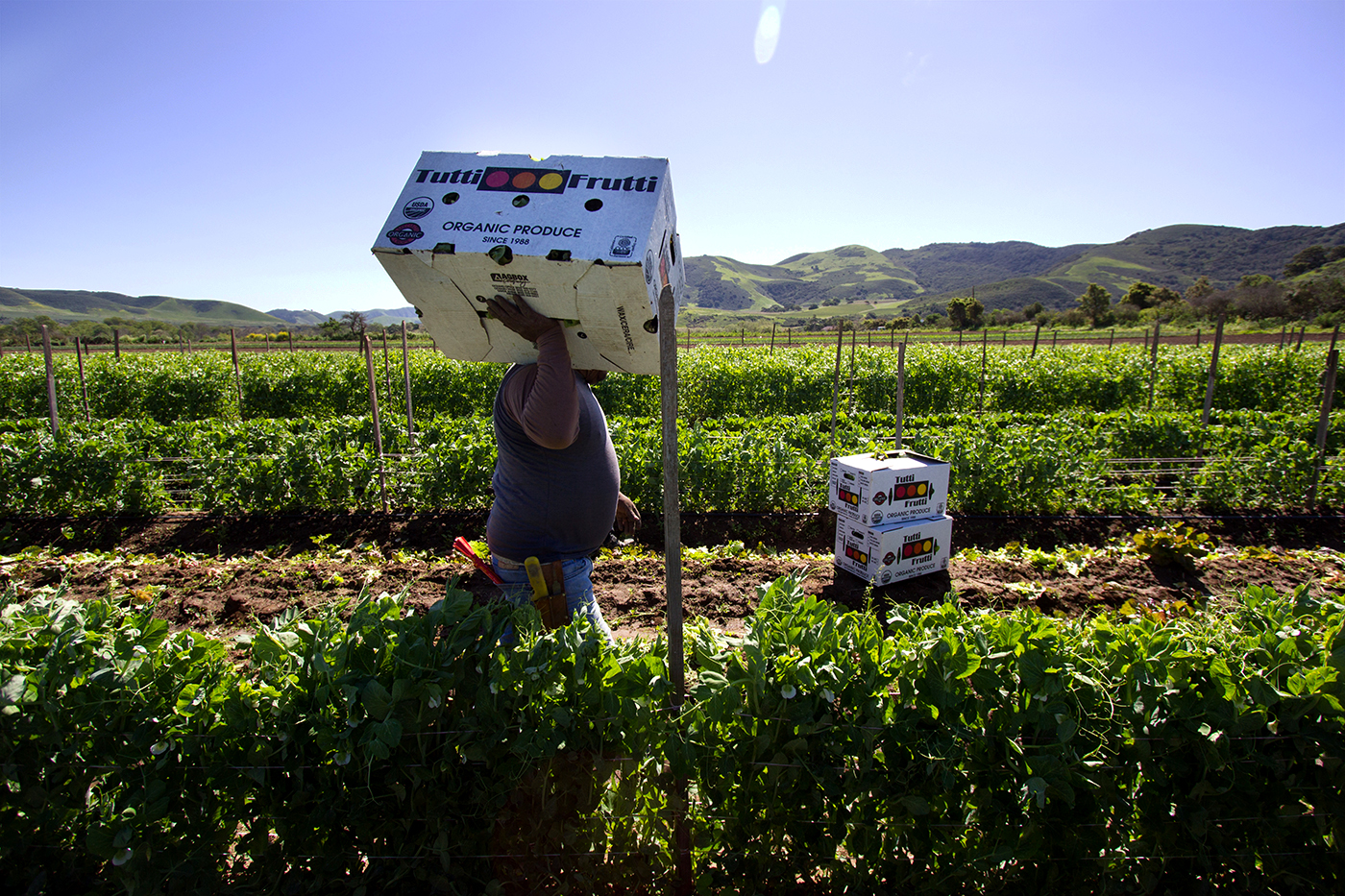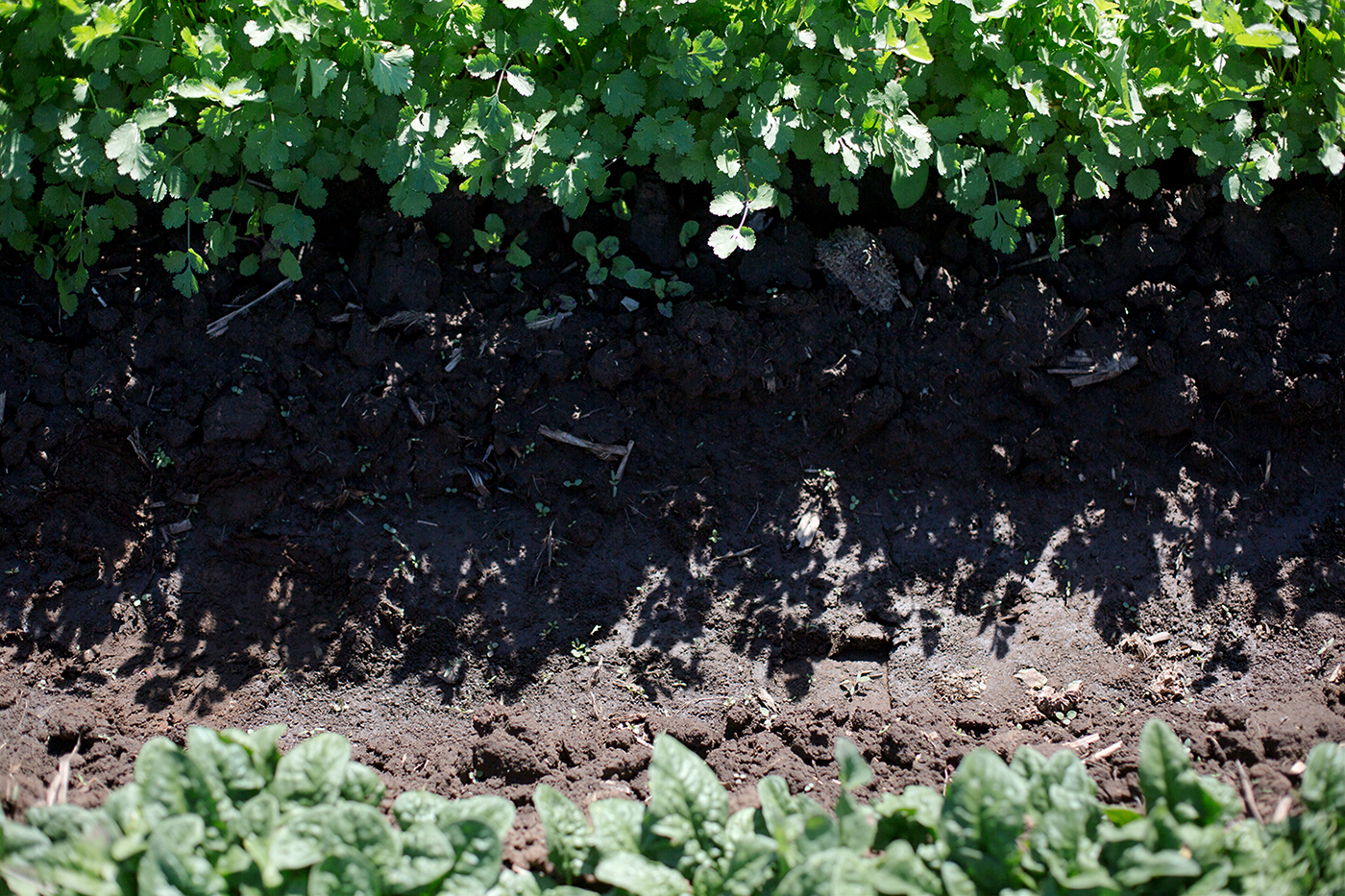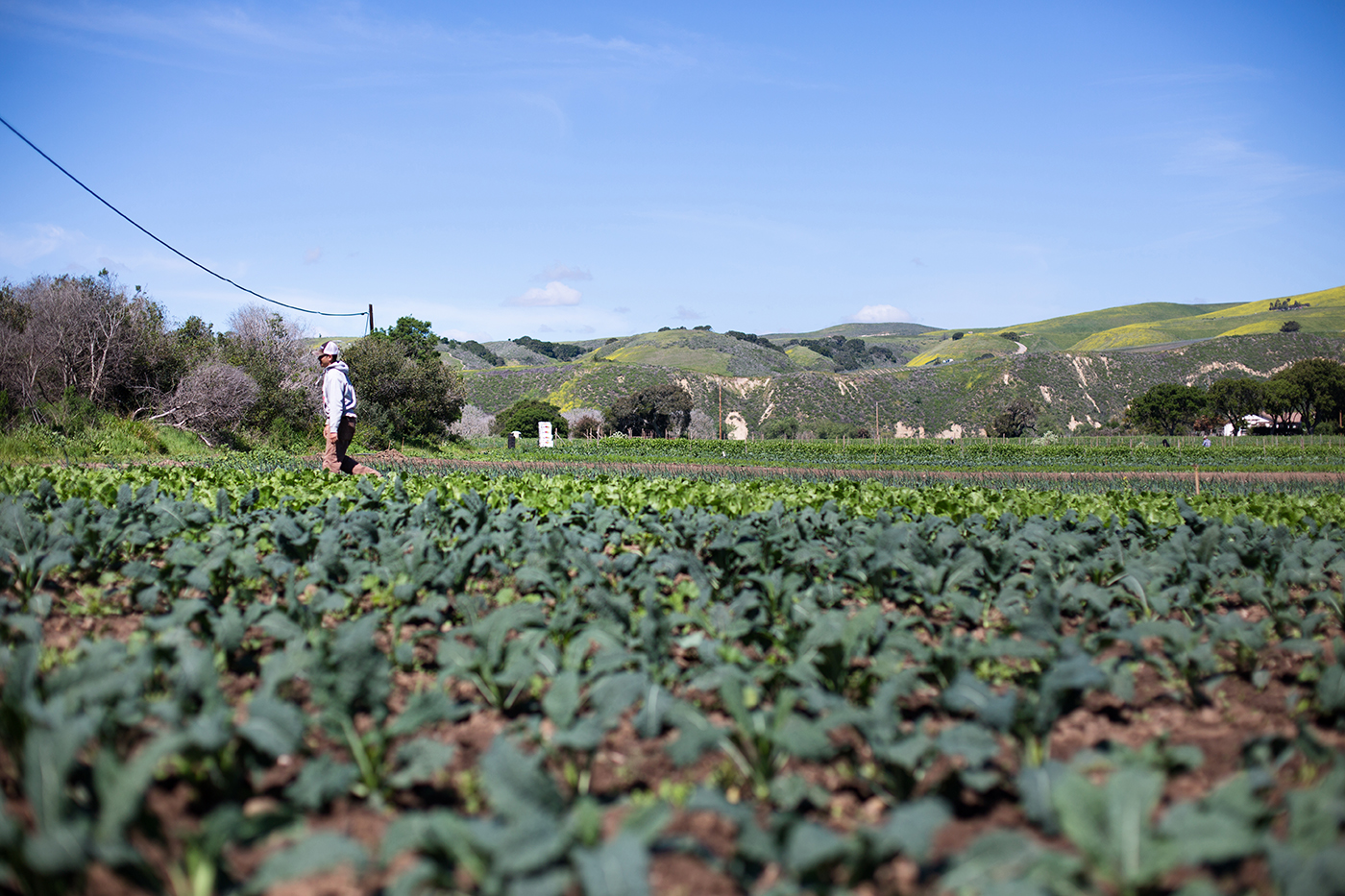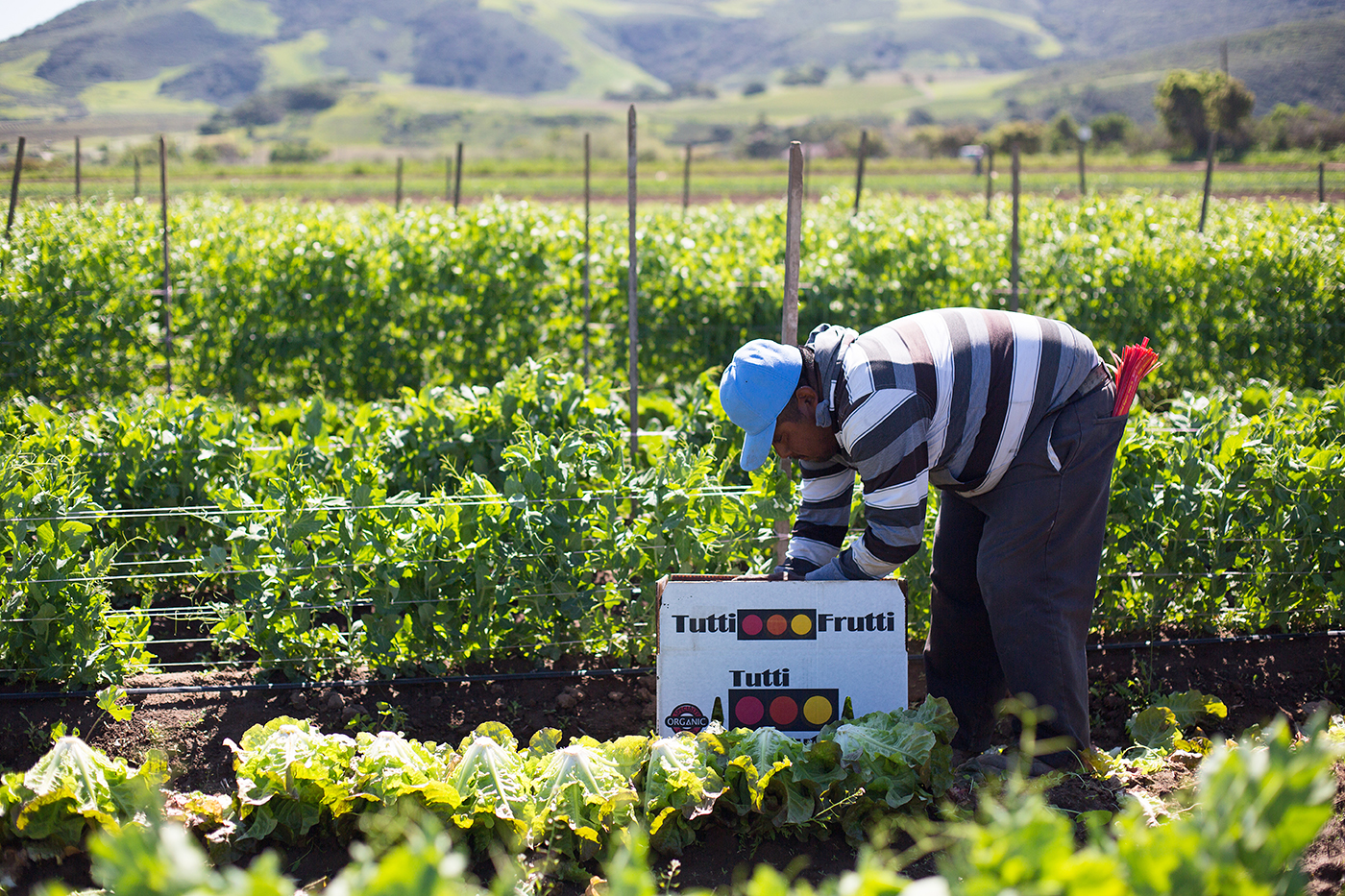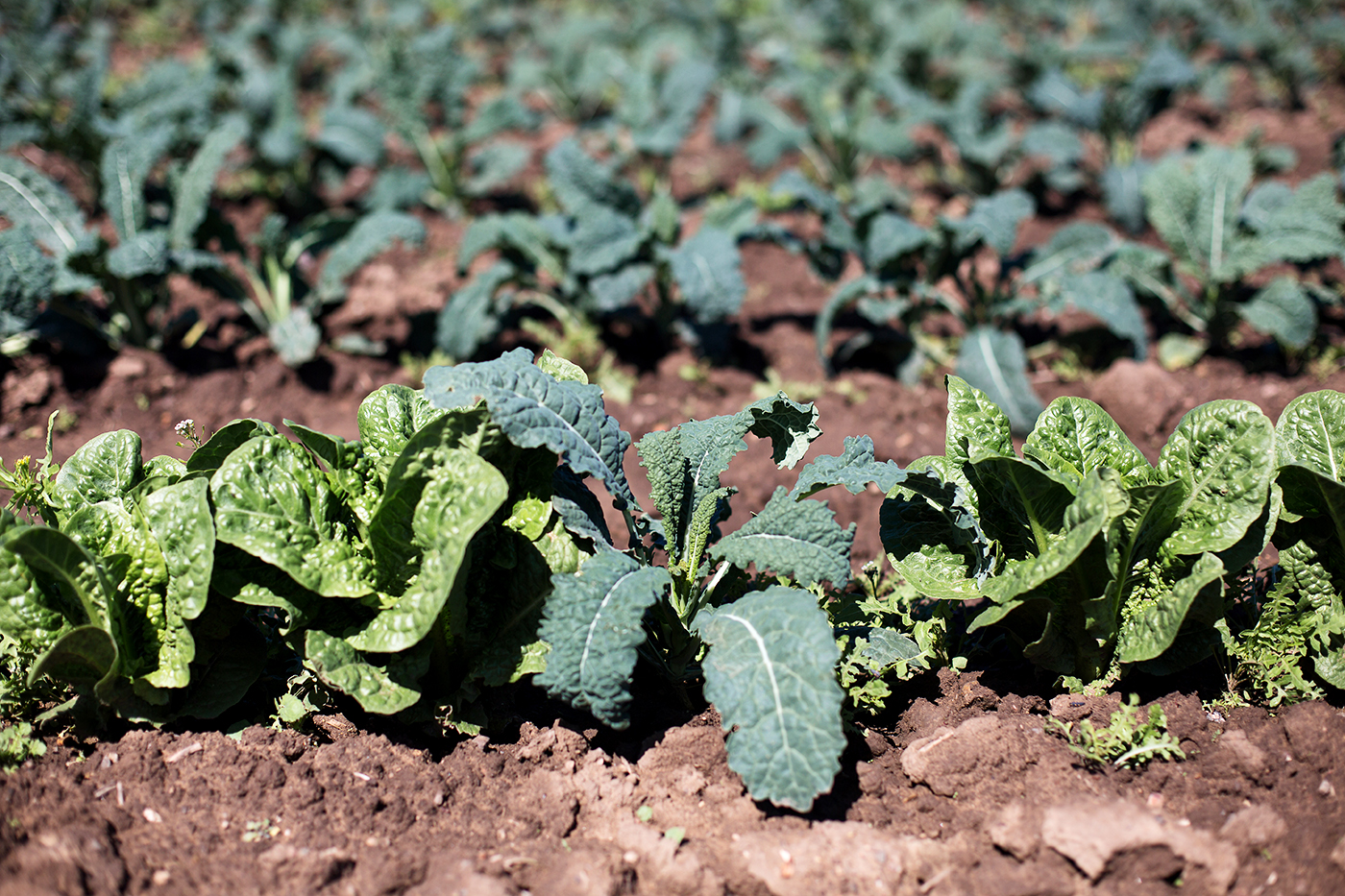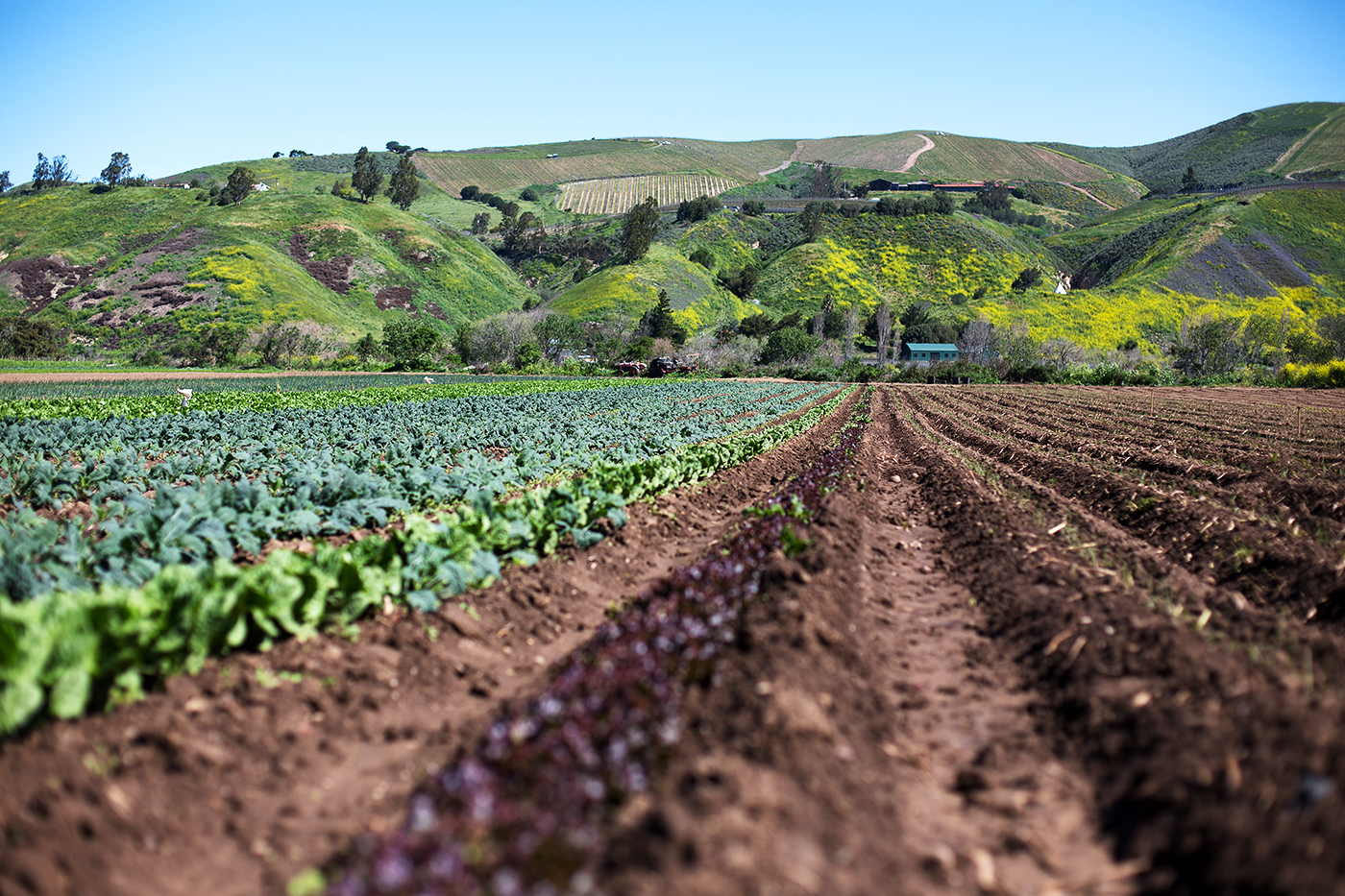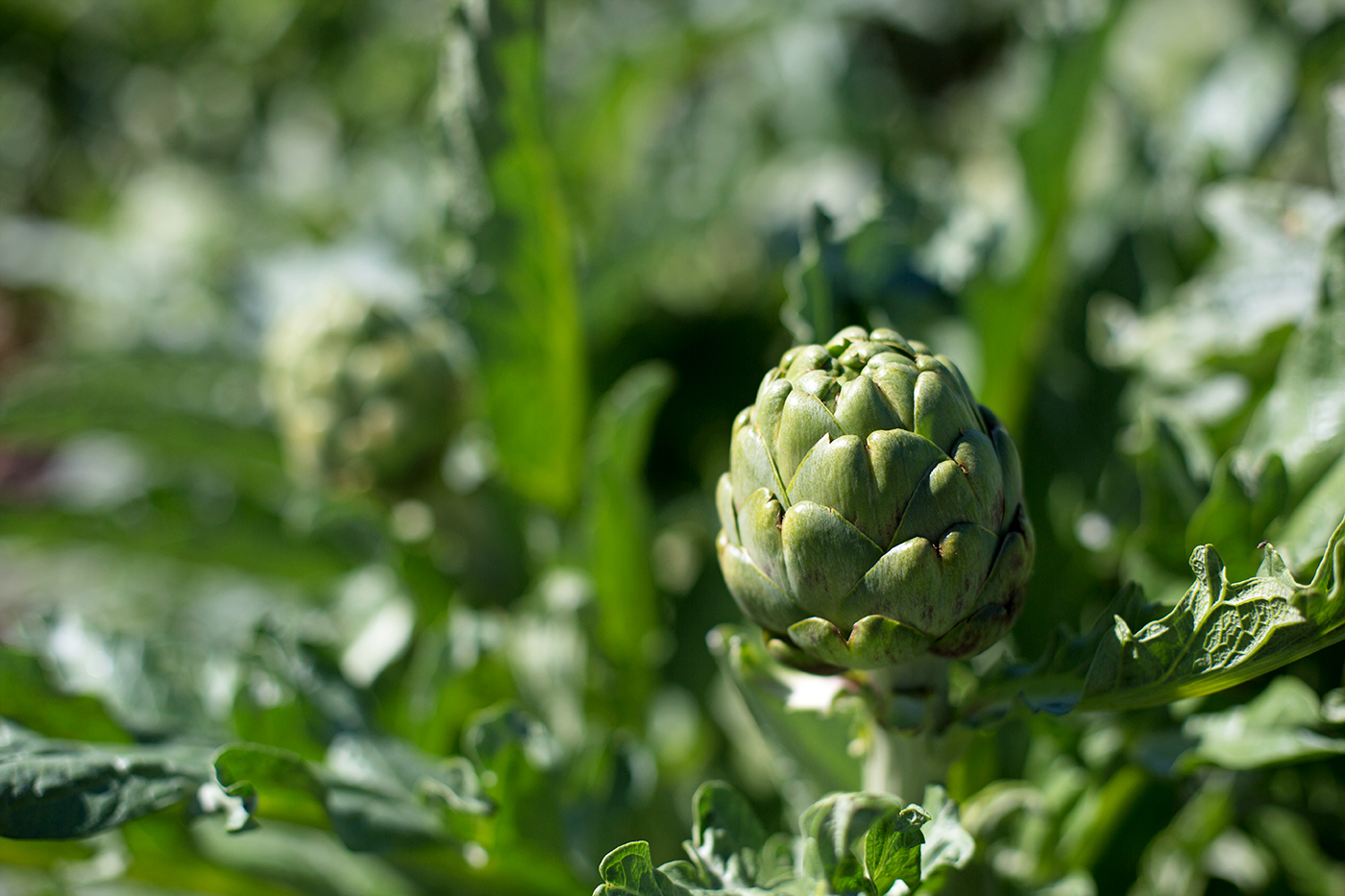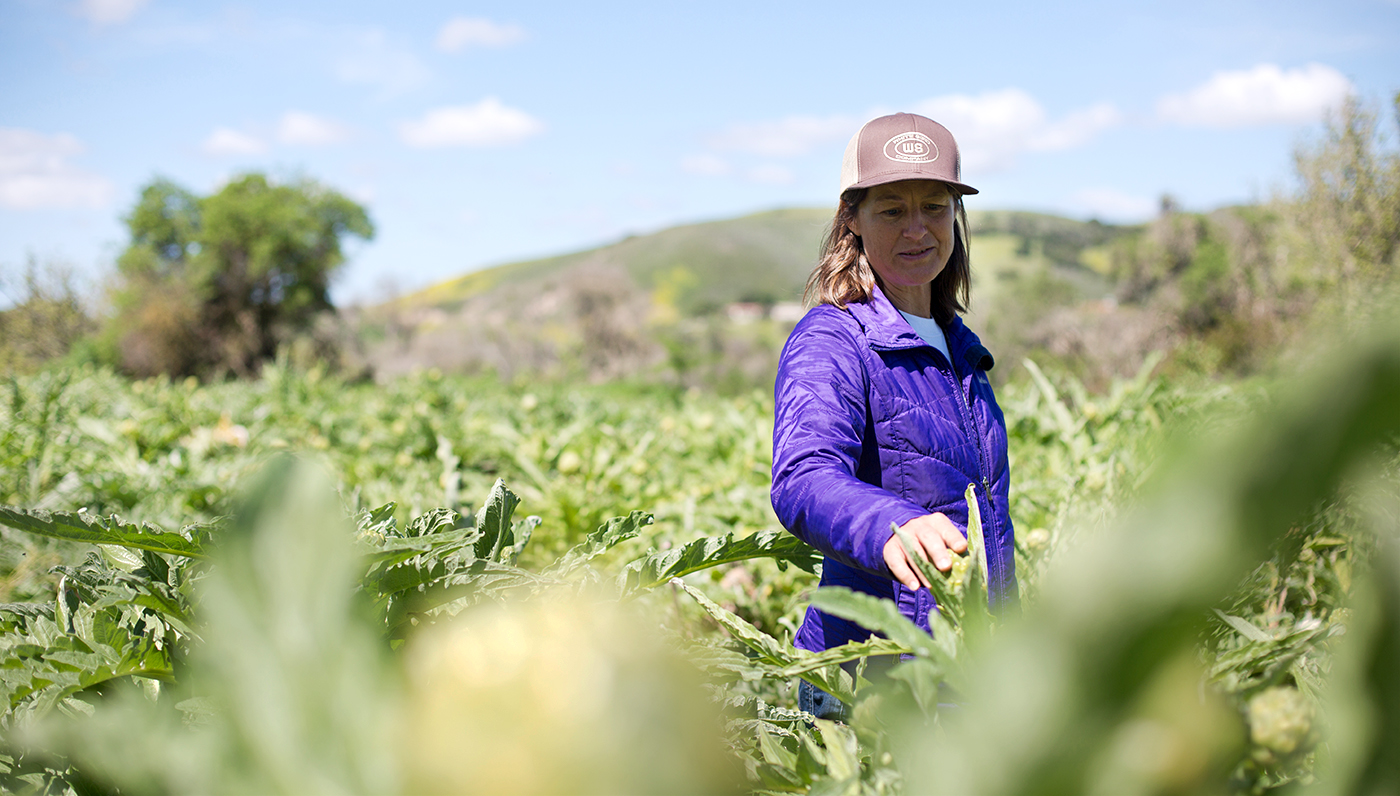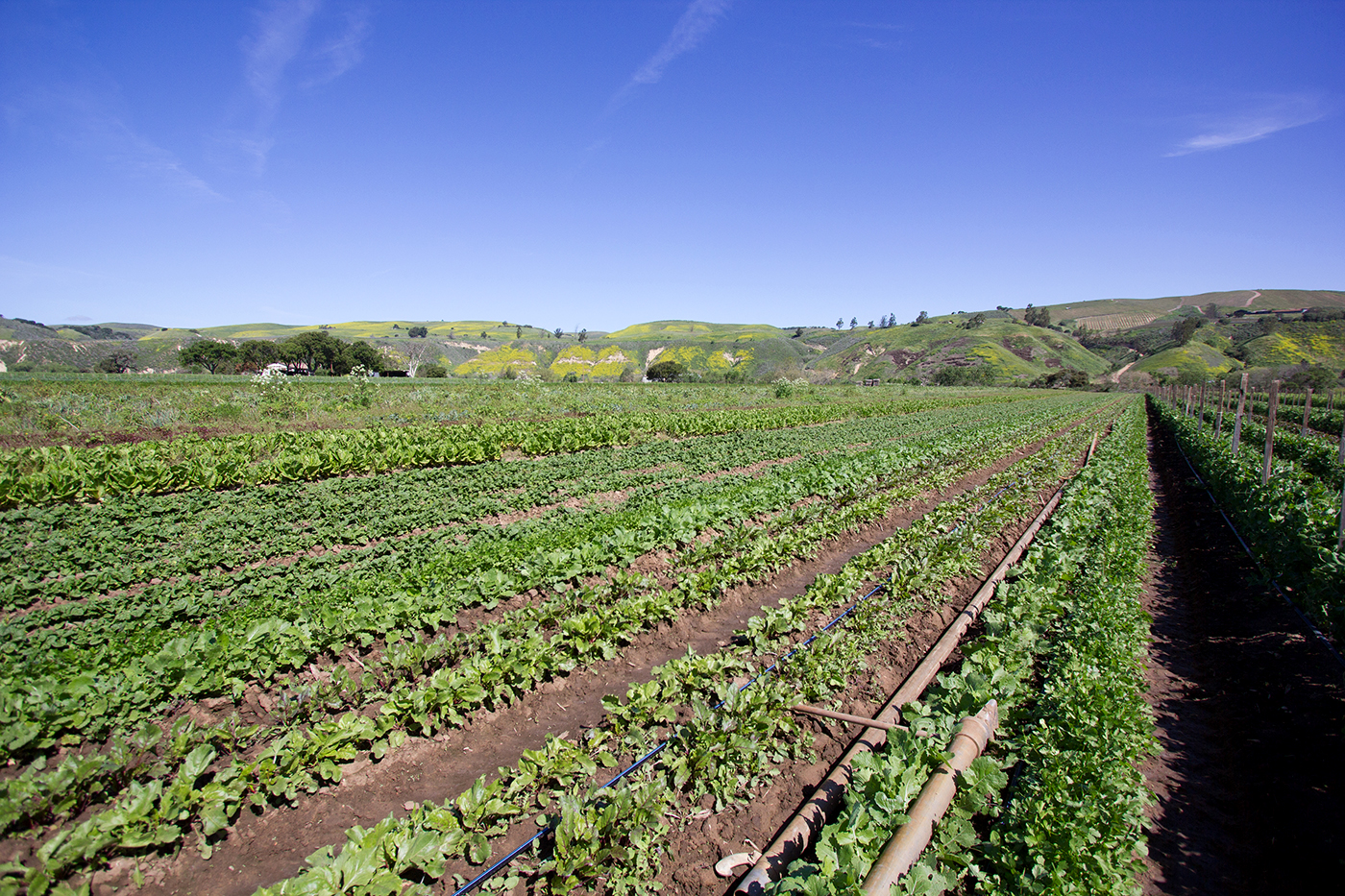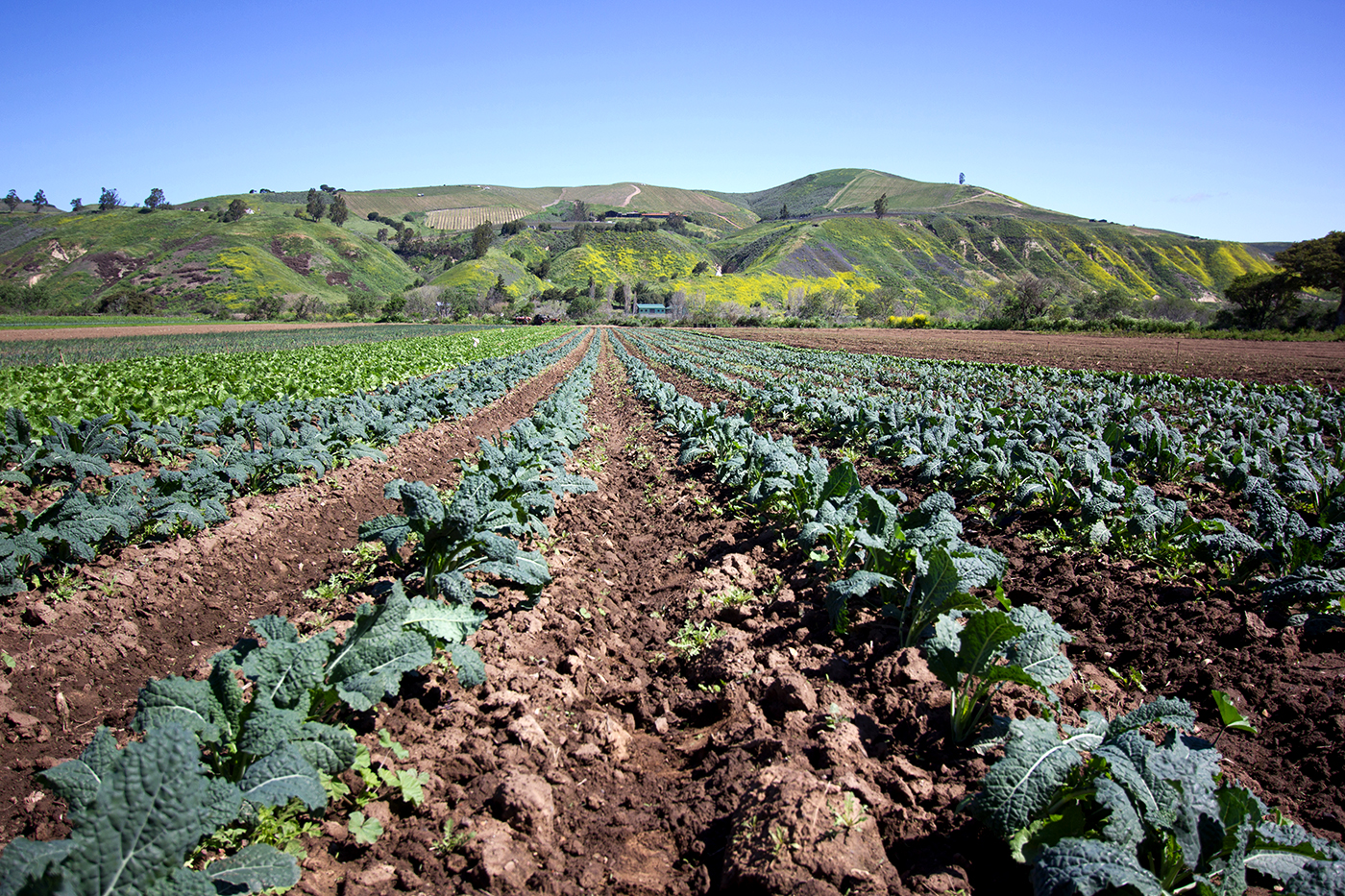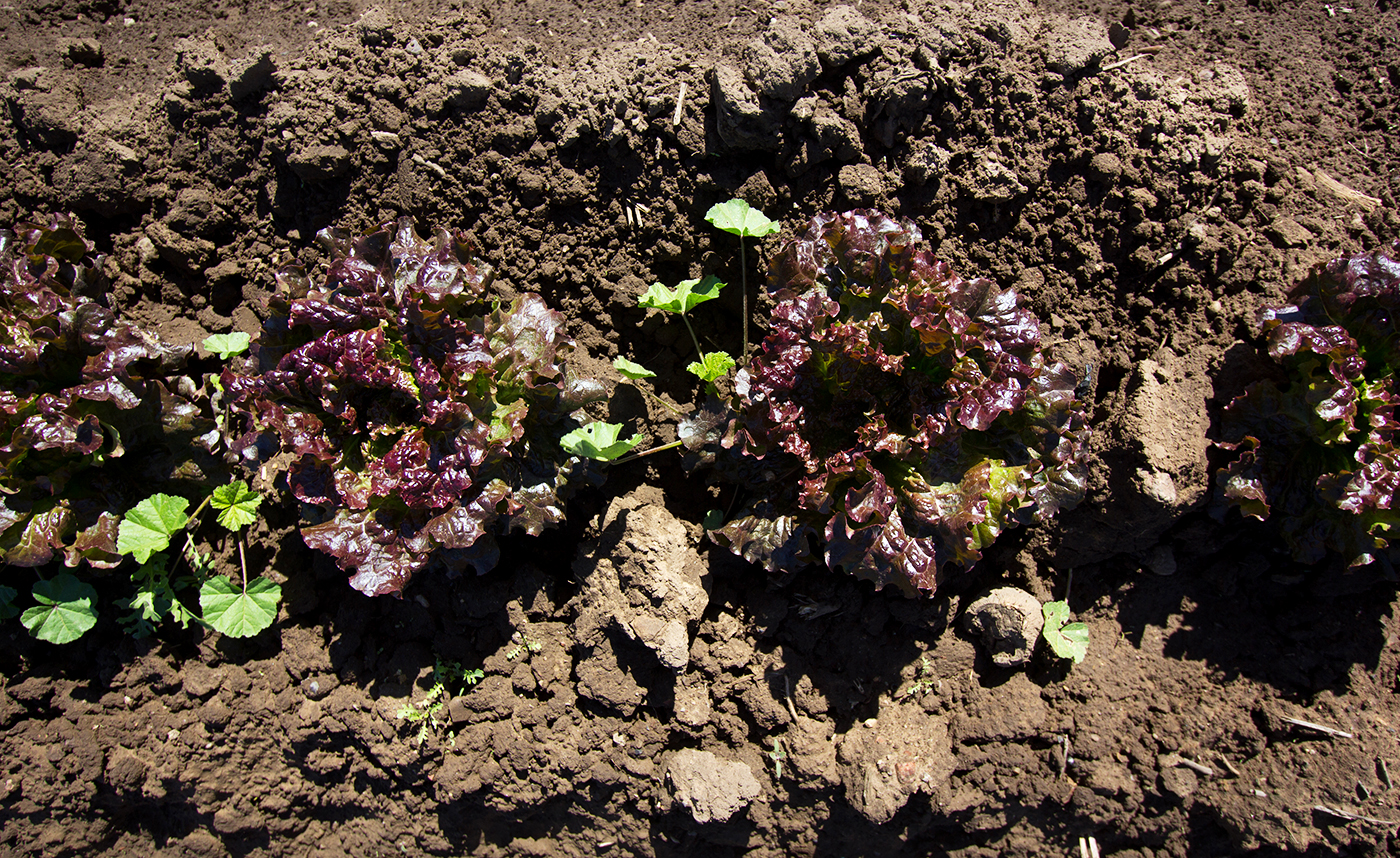
An Imperfect System
The U.S. wastes 20 percent of the produce it grows because it falls short of cosmetic perfection. While advocates worry about the environmental effects, entrepreneurs seek to convince consumers of the beauty of “ugly” produce.
We've all picked up a piece of produce in a store, examined it and then put it back down because something didn’t seem quite right. Maybe there was a scratch on it or the coloring wasn't perfect. Most likely, we aren't the only people who passed on it either.
Those pieces of fruits and veggies are anomalies. Most of the produce that has slight imperfections never makes it to store shelves even though there’s nothing wrong with it. It just gets thrown out, used as animal feed or buried back into the ground at the farm. No one wants it.
Why? Because it’s ugly.
What is ugly?
Click on the produce below to peek at a page of the USDA AMS standards for that crop and for more information on some of its cosmetic specifications.
Photos by Magali Gauthier
X
Image courtesy of USDA
Picture an average vegetable. Anything that strays from that image is probably quote-un-quote ugly. For example, a carrot with two tips, a yellow lime or an eggplant with a weird growth on the side.
What makes a vegetable ugly is primarily spelled out in grading standards created by the U.S. Department of Agriculture's Agricultural Marketing Service, or AMS. The standards serve as detailed guidelines for how produce should look. They determine the size, color, shape, firmness, ripeness and other physical markers of 166 fruits and vegetables.
According to the AMS, the standards were developed at the request of the market. Buyers and farmers wanted a third party to create an official way to determine why produce should be accepted or rejected.
“U.S. grade standards provide a common language for trade,” said Carl Purvis, a public affairs specialist with the AMS. “The produce industry recognizes grade standards as essential in describing and resolving disputes about product quality.”
If farmers and buyers could more easily agree on how produce should look, then selling and shipping would be made easier for everyone. The more uniform that produce is, the easier it is to standardize the packaging and shipping process.
These standards, however, are not requirements. They were and still are simply guidelines.
“[The standards] are a voluntary way to determine and report a product’s quality and value,” Purvis said.
JoAnne Berkenkamp, a senior advocate with the Food & Agricultural Program at the Natural Resources Defense Council, or NRDC, thinks the standards set a precedent for the kind of produce that makes it to store shelves.
“After 40 years basically of the standards rising, rising, rising -- we all go to the grocery store and we come to expect everything to be uniform and beautiful,” Berkenkamp said. “And so people don't necessarily respond well when something is misshapen or a little too big or too small or has a small blemish.”
The cycle never ends. If what is considered “beautiful” sells well, then stores will keep stocking their shelves with that produce. The ugly ducklings often end up as animal feed or in landfills or never leave the farm.
At the farm
There’s a field of parsnips in front of me. The root vegetables boast stems and leaves about a foot to a foot and half tall. There’s a walnut orchard nearby, and far off in the distance is a crop of 2-year-old artichokes. The drone of a distant tractor can be heard from behind a hill, competing with a man playing bachata over his truck radio behind the ranch building.
Tutti Frutti Farms in Lompoc, California, is the greenest it has been in a handful of years thanks to the state's very wet winter. When all these parsnips are picked and trimmed in a couple of months, there will be about 5,000 cases.
"Here at Tutti Frutti we kind of have a split personality,” said Cindy Douglas, the floor manager at the farm. “We do farmers markets in the Santa Barbara and LA area and Ventura County too. And we ship produce during the warmer months of the year. We are unique in that we do both at the same time.”
These parsnips are being grown specifically for the latter. Douglas adds that they sell tomatoes and winter squash to wholesale markets as well.
To make sure that her produce meets the USDA standards, a supermarket representative has inspected the planted parsnips. This is common. Store representatives come by during the growing season or right after harvest. They and the farmers agree on the cosmetic specifications of the produce. The AMS standards are voluntary and are used as initial guidelines during these discussions. The farmer and the store representative can choose to stray from them and decide on their own cosmetic requirements.
Some produce does not even have a grade standard — in these cases, it falls completely to the farmer and the buyer to settle on a cosmetic standard. Heirloom tomatoes are an example of such a crop.
“One customer might take a smaller tomato and another customer might not,” Douglas said. “So each buyer in the case of heirlooms has their specifications. Typically they sort of all come together and fuse into one standard that lives over the years. So right now we’re under a size restriction, whereas five years ago they would take any size. The standards evolve and change over time.”
According to Berkenkamp of the NRDC, approximately 20 percent of all crops — including Douglas' parsnips — won’t make it onto store shelves. Some of that is due to surpluses created by overplanting; in other cases, crops won't meet cosmetic specifications. Farmers overplant for several reasons: to account for pests, to compensate for harsh weather and to be able to make up for any imperfect produce that does not sell.
The water that is used to grow that 20 percent also goes to waste. The NRDC has found that 21 percent of the United States’ fresh water is used to grow food we don’t eat. The food industry also uses 18 percent of its fertilizer and 19 percent of its cropland to grow food that is wasted. (These statistics include produce, meats, fish and any food we grow to eat, not solely imperfect produce.)
Some farmers say stores sometimes use the AMS standards to get out of sales when they over-order, by claiming that the produce doesn't meet the specifications, even when it does. If the farmer has already sent a pallet off to the store, the farmer often loses that produce. In such disputes, either party can bring in an AMS representative to judge the cosmetic quality of the foods and help reach a decision. Multiple supermarkets were contacted for comment. None responded except Whole Foods, which responded with a written statement that did not address the allegation of stores abusing the standards.
Berkenkamp believes that farmers get the short end of the stick.
“I feel for the farmers because they have the least market power in the marketplace for their products and they're price takers,” she said. “And nature produces stuff that's imperfect and they do their best to minimize that, but you know it's part of what happens. And yet they typically can't sell that type of production through no fault of their own.”
Farmers left with unsold produce have few options. They can throw that food away or donate it, but neither option gives them any return on their investment. They can try to sell it for pennies on the dollar to a processor, or for a fair market price to a company that buys rejected or surplus produce. They can also put it back into the ground and nourish their soil. Their final option is to sell it at a farmers market.
“Tutti Frutti's model is that what can't be shipped will go to farmers markets,” Douglas said.
Farmers markets are not required to follow USDA grade standards. Sam Edelman of the Santa Barbara Certified Farmers Market Association said farmers just have to make sure they are selling good, edible produce.
“There is absolutely no oversight at our markets,” Edelman said. “There is no sizing or packaging standards. It does have to be quality. It can’t be moldy or anything like that, but as long as the quality is there ... there’s no enforcement.”
If Tutti Frutti can’t sell that produce in the farmers markets, Douglas said, then the farm buries it back into the soil.
“Putting plant matter back into the soil definitely helps the microbes. It helps,” she said. “But sometimes we can sell it all.”
When food absolutely can't be sold or buried on the farm, it is either turned into animal feed or just goes into a landfill.
Moments from around the farm
Store representatives often come out to farms to see crops before they are shipped. When they do, they and the farmers agree on the cosmetic specifications of each produce. Here, Cindy Douglas describes what that interaction is like. If the video does not play, click here. (Video by Magali Gauthier)
USDA AMS grade standards help farmers and buyers delineate cosmetic specifications for produce. What happens when the grade standards are abused? Here, Cindy Douglas describes what happens in these cases. If the video does not play, click here. (Video by Magali Gauthier)
The emissions
A cattle ranch borders the 40-year-old Johnson Canyon Landfill in Gonzales, California. Giant nets line the edge of both properties to prevent trash from blowing over into the fields. The landfill is run by Salinas Valley Recycle, a local agency. A large portion of the agricultural waste in Central California is buried here. Last year, the landfill received 4,700 tons of packaged agricultural waste, as well as an untold amount of loose produce from residences and the agriculture industry.
In 2008, the agency found that 30 percent of all material going into the landfill was organic; 18 percent of the total was solely food waste, or 34,000 tons. The landfill is not able to confirm how much of that is “ugly” produce thrown out at the farm.
“We don’t know,” said Mandy Brooks, the resource recovery manager at Salinas Valley Recycle. “That’s where our team of recycling technicians are trying to work with the large agricultural companies. To figure out why is that material going there. Could we divert it?”
In 2008, the Johnson Canyon Landfill did a waste study and found that 18 percent of what was in the landfill was food waste.
What happens when it decomposes? If the video does not play, click here. (Video by Magali Gauthier)
Brooks believes that waste management should not be dealt with on the back end at the landfill, but on the front end in packaging factories and on farms.
Ugly or not, all that buried produce decomposes, releasing methane — a greenhouse gas 25 times more damaging to the environment than CO2. Salinas Valley Recycle is required to capture the gas.
“We are trying to divert that organic waste, but that's really more the back end — capturing the gas that's created,” Brooks said. “We'd like to get that material out of the landfill and not produce that gas in the first place.”
There are 60 tubes within the landfill that collect the methane gas and transport it to a facility on the property where it is turned into electricity.
“Landfills are one of the most regulated industries in the world, so not capturing the gas is not an option so we have to do that,” Brooks said. “But how we then deal with it on the other side of it is kind of up to us."
Emissions from landfills, which are significant, are only part of the picture.
Berkenkamp of the NRDC says that food thrown out from stores has a greater carbon footprint than food landfilled directly from the farm.
“Things that are pulled off of grocery shelves — you incurred all the emissions that were involved in growing and shipping it and chilling it and maybe packaging it and then putting it on a shelf and then discarding it and hauling it and then it maybe getting landfilled, depending on how particular retail manages their waste,” she said. “So it's really just the whole cycle.”
No one knows how much methane gas is released by decomposing ugly produce.
“One of the problems is that the data just does not exist,” Berkenkamp said.
Some solutions
Take a look inside Imperfect Produce's East Bay warehouse.
The Imperfect Produce warehouse is located in Northern California in Emeryville. The company sources both cosmetically imperfect and surplus produce that would otherwise have gone uneaten and then sells it at a discounted price. Since its launch in 2015, the company has saved 3.2 million pounds of produce from going to waste.
The mornings are busy. Farmers deliver their produce early and Imperfect Produce workers immediately begin cleaning it. The day I visited, several workers were wiping dirt off of hundreds of individual red potatoes. Once that is done, it is sorted into boxes to be delivered to customers’ front doors. If the produce is not shipped right away, it is placed in one of two room-scale refrigerators in the back of the warehouse. The produce never stays at the warehouse for more than 24 hours. It is trucked quickly to customers in the Bay Area, and another warehouse in Los Angeles delivers produce to people there.
“Our job is to come in and divert that and to deliver it right to people’s doors,” said Reilly Brock, who works in social media marketing at Imperfect Produce. “So they’re getting really fresh, delicious, healthy produce right to their door, and they’re also getting to help fight food waste while they do it.”
Brock explains that a lot of the imperfect produce the company receives is rejected by stores because of size (a sweet potato that is too big, for example) or discoloration (a lime that is yellow, to name one). Truly “ugly” fruits and vegetables (like carrots with multiple tips or bell peppers stuck together) are a minority.
“This is really expensive at the stores, but literally you see there's one flower right here — well, with broccoli what most people don't know is that it's a flower,” Brock said as he showed me broccoli as a surprising example of what does not meet cosmetic standards. “But it's an immature flower. When you get it at the store, it's harvested before it blossoms. Right here, one of the broccoli has started to flower. That means that for the growers they can't sell it, because the store doesn't want broccoli with flowers. Because people aren't used to seeing it.”
Whole Foods Market Inc. carries items from Imperfect Produce in certain stores. “Guests will find specially-packaged ‘ugly’ fruits and veggies like potatoes and apricots on sale at great prices," the high-end supermarket chain said in a statement. "Historically, small, misshapen, or otherwise cosmetically-flawed produce never makes it to market, but Bay Area startup Imperfect Produce and Whole Foods Market are helping it see its way to the shelf.”
Companies like Imperfect Produce and campaigns such as Ugly Fruit & Veg and Ugly Produce Is Beautiful are trying to change the way people view food. They're using Instagram – renowned for its food imagery, which some even call “foodporn” — to show people how perfectly good food can look different from what they've been led to expect.
Robert Kozinets, a public relations professor at the University of Southern California who is an expert in foodporn and food imagery, believes the internet will continue to introduce players that can change the way these foods are viewed.
“What was rejected because there were big institutions involved in selecting what the image was of our desire now gets upended as you start to see more people with cameras and access to the Internet say, ‘Hey! What about this? This is also potentially desirable and potentially beautiful,' ” he said.
He also thinks that these regulations became so ingrained because they helped standardize the process of shipping and selling produce. However, customers and smaller food retailers have the power to cause change.
“I think there may be some lessons around how we think about visual culture and how these things kind of change as different agents and agencies get involved,” Kozinets said. “It tends to be these big institutions that standardize things and then smaller players that really work on disrupting them.”
The NRDC's Berkenkamp is worried that the issue of imperfect produce is oversimplified.
But Brock of Imperfect Produce ends our interview on a simple note.
“Anyone that has ever shopped at a farmers market or grown their own produce in a garden can tell you that nature does not produce uniformity — nature produces diversity,” he said. “And we think that's something to be cherished and celebrated.”
Imperfect Produce is a company that sells "ugly" food. Reilly Brock, in social media marketing, explains how the business works. If the video does not play, click here. (Video by Magali Gauthier)
Companies like Imperfect Produce are trying to fight the wasting of imperfect food through Instagram. They are using the platform to show people that what is considered ugly isn't as unattractive as it seems. If the Storify does not load, click here.
Sharing my storymaking process through Instagam
Due to the visual nature of this story, I chose to show my social media audience my process through Instagram. Below you'll find that work.
Instagram story, over the past few months, of my coverage and process. If the video does not play, click here.
